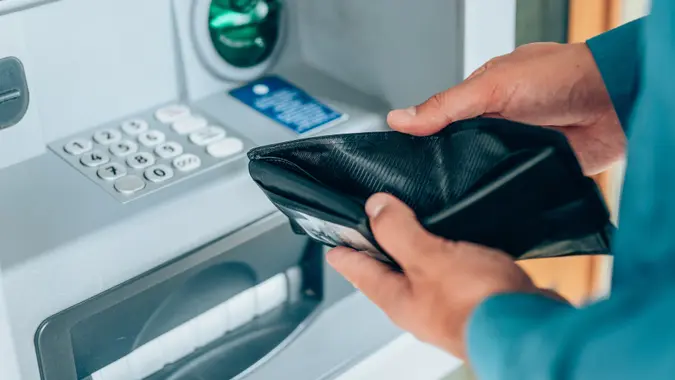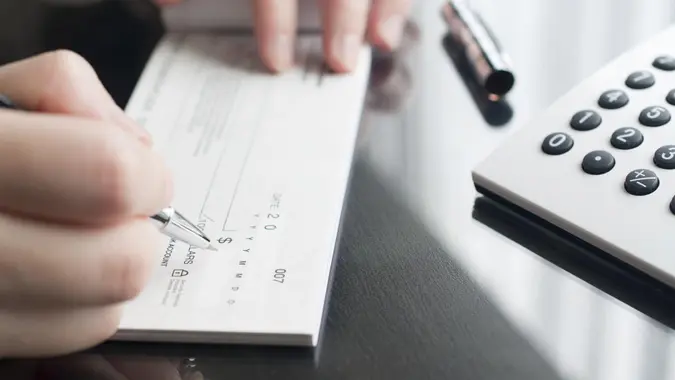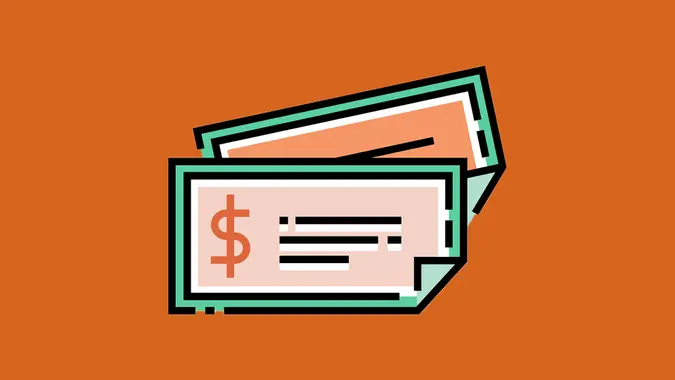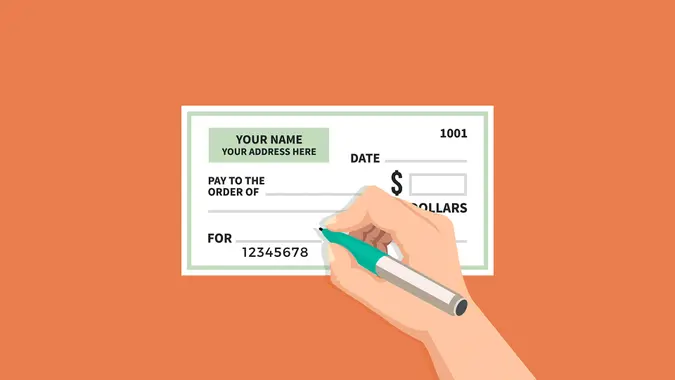How To Get Overdraft Fees Refunded in 3 Simple Steps

Commitment to Our Readers
GOBankingRates' editorial team is committed to bringing you unbiased reviews and information. We use data-driven methodologies to evaluate financial products and services - our reviews and ratings are not influenced by advertisers. You can read more about our editorial guidelines and our products and services review methodology.

20 Years
Helping You Live Richer

Reviewed
by Experts

Trusted by
Millions of Readers
Getting hit with an overdraft fee can be frustrating — but the good news is you may be able to get it refunded. Whether it happened because of a timing issue or budgeting slip, many banks are willing to reverse the charge, especially if it’s a one-time mistake. Here’s exactly how to get overdraft fees refunded, plus how to avoid them going forward.
How To Get Overdraft Fees Refunded: 3 Easy Steps
Overdrawing your account can happen, even when you think you have sufficient funds. Here are three steps to take to get your overdraft fee refunded:
Step 1: Prepare Your Case
Preparedness always helps when disputing or redeeming any overdraft fees whether it’s from a mobile banking transaction or an in-store purchase.
When totaling your overdraft fees here are key points to consider and have ready to answer:
- How much were you charged in overdraft fees?
- Why were you charged those overdraft fees?
- What transaction caused the overdraft fee?
Step 2: Contact Your Bank
It’s time to contact customer service. If you have been a loyal customer and don’t have a history of frequent overdraft infractions, then getting a refund shouldn’t be too difficult.
Though many banks offer the online banking feature of secured messaging, often just calling your bank will be the most effective way to get your money back.
Even if you have opted out of overdraft protection, you may be surprised by how easy it is to get a refund just by calling in.
Step 3: Follow Up if Necessary
Most likely, when you call in, the representative will immediately grant your refund request.
However, if you do run into some resistance, don’t back down. You can ask to speak with a supervisor or just call the general customer service line again and speak with someone else as the odds are in your favor.
Overdraft Fee Policies Can Vary More Than You Think
- Most banks charge around $35 per overdraft.
- Some banks may charge daily until your account is back in good standing.
- The definition of “good standing” differs — sometimes banks require your balance to be $25 to $35 or more to stop the fees.
- Always check your bank’s specific policy to avoid surprises.
How Overdraft Fees Work
Overdraft fees happen when you spend more than you have in your account. In these cases, the bank covers the payment — but then charges you a fee.
Banks often justify overdraft fees as a way to protect you from bounced checks or declined transactions, but these charges can stack up quickly if you’re not careful.
Average Overdraft Fees Across Banks
Most major banks charge a similar amount for overdraft fees. However, overdraft fees can vary by your location, account type and transaction type, like an ATM withdrawal versus a debit card purchase.
| Bank Name | Average Overdraft Fee |
|---|---|
| Chase | $34 |
| Bank of America | $10 |
| TD Bank | $35 |
How To Avoid Overdraft Fees in the Future
If you don’t want to worry about getting overdraft fees refunded you can always take measures to avoid these fees altogether.
- Budget tracking apps: Many apps can help you keep a budget so you know when you are getting low and how you are spending your money.
- Switch banks: If you are unhappy with your current bank’s fees or service, you should shop around and find the right fit for you.
- Turn on mobile banking app notifications: Turn on alerts and notifications from your mobile banking app to keep you updated on exactly where you stand financially.
Are There Alternatives to Overdraft Fees?
You may be able to avoid overdraft fees entirely by exploring these options:
- Link your savings account. You may be able to link your savings and checking accounts so funds from your savings can automatically be transferred to your checking account when it’s veering close to a low balance.
- Link lines of credit. You may be able to set up a line of credit that gets charged instead of your checking account to avoid an overdraft.
- Use a bank with no overdraft fees. Some banks, like Capital One, have gotten rid of overdraft fees. A few other banks either changed their policies or made them more consumer-friendly.
Final Take
You should be rewarded for being a loyal customer of your bank, not penalized. Don’t assume overdraft fees are unavoidable. Knowing how to get overdraft fees refunded could save you money and frustration. Be sure to reach out to your bank for a refund, especially if you have been a loyal customer.
FAQ
Here are the answers to some commonly asked questions about overdrafts and how to get a refund.- How can I get my overdraft fees refunded?
- Contact your bank directly, explain the situation and request a refund -- especially if it's a one-time mistake or you're a loyal customer.
- What do I say to my bank to get my overdraft fees refunded?
- Politely explain why the overdraft happened, mention your history as a good customer and ask if they can waive the fee as a courtesy.
- How many overdraft fees can a bank charge in a day?
- Many banks put a limit on how many overdraft fees they charge a day, normally three to five.
- Can overdraft fees affect your credit score?
- Overdraft fees do not affect your credit score. They do not show up in your credit report, either.
Information is accurate as of April 2, 2025.
 Written by
Written by  Edited by
Edited by 
























